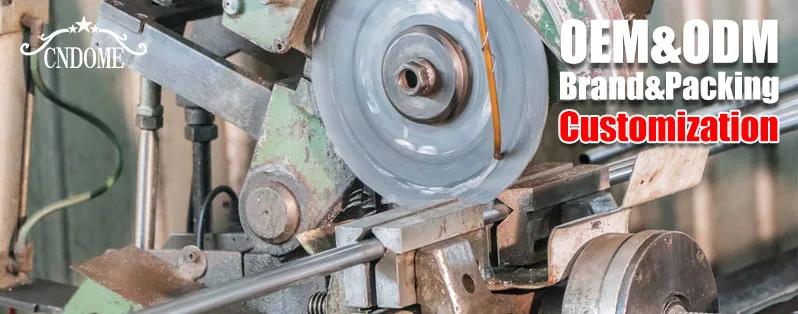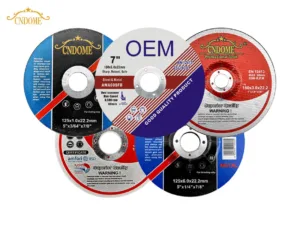Cutting aluminum demands precision and the right tools to achieve clean, efficient results. Among the various cutting tools available, cutting discs stand out as versatile and effective solutions. In this blog post, we will explore the nuances of cutting discs for aluminum, discussing the types available, proper usage, safety precautions, and tips for achieving optimal results.
Types of Cutting Discs for Aluminum:
1. Abrasive Cutting Discs:
- Composed of abrasive materials like aluminum oxide or silicon carbide.
- Ideal for cutting softer aluminum alloys.
- Suitable for both hand-held angle grinders and stationary chop saws.
2. Diamond Cutting Discs:
- Utilize synthetic diamonds bonded to the disc’s surface.
- Excellent for cutting harder aluminum alloys.
- Ensure clean, precise cuts with minimal heat generation.
3. Carbide-Tipped Cutting Discs:
- Feature carbide teeth for enhanced durability.
- Suited for cutting aluminum and other non-ferrous metals.
- Long-lasting performance and resistance to wear.
Proper Usage Guidelines:
1. Choose the Right Disc:
- Select a cutting disc based on the aluminum alloy you are working with.
- Consider the disc’s thickness and diameter for optimal performance.
2. Secure Workpiece:
- Clamp or secure the aluminum workpiece firmly to prevent movement during cutting.
- Ensure a stable work surface for precise and safe cuts.
3. Wear Safety Gear:
- Always wear appropriate personal protective equipment (PPE), including safety glasses, gloves, and hearing protection.
- Use a face shield for additional protection against sparks and debris.
4. Optimal Speed Settings:
- Adjust the speed of your cutting tool according to the manufacturer’s recommendations.
- Excessive speed can lead to overheating, while insufficient speed may result in inefficient cuts.
5. Cooling Measures:
- Apply a cutting fluid or lubricant to reduce heat and extend the life of the cutting disc.
- Monitor the temperature of the workpiece to prevent distortion.
Safety Precautions:
1. Read Manufacturer Guidelines:
- Familiarize yourself with the manufacturer’s guidelines for both the cutting disc and the cutting tool.
- Follow recommended operating speeds and usage instructions.
2. Inspect Discs Before Use:
- Check cutting discs for any signs of damage, such as cracks or wear.
- Replace worn-out or damaged discs immediately to prevent accidents
3. Work in Well-Ventilated Areas:
Ensure proper ventilation to disperse fumes and gases generated during the cutting process.
Tips for Optimal Results:
1. Practice on Scrap Material:
Before starting a project, practice cutting on scrap aluminum to get a feel for the tool and achieve the desired results.
2. Use a Guide for Straight Cuts:
Utilize a straight edge or guide to maintain precision during straight cuts.
3. Clean Cuts with Minimal Burrs:
- Adjust the cutting speed and feed rate to achieve clean cuts with minimal burrs.
- Consider using a deburring tool to smooth the cut edges.
Conclusion:
Mastering the art of cutting aluminum with discs involves a combination of choosing the right tools, following proper guidelines, and prioritizing safety. By understanding the nuances of abrasive, diamond, and carbide-tipped cutting discs, and by adhering to recommended usage practices, you can elevate your cutting skills and achieve precise, efficient results in your aluminum fabrication projects.



